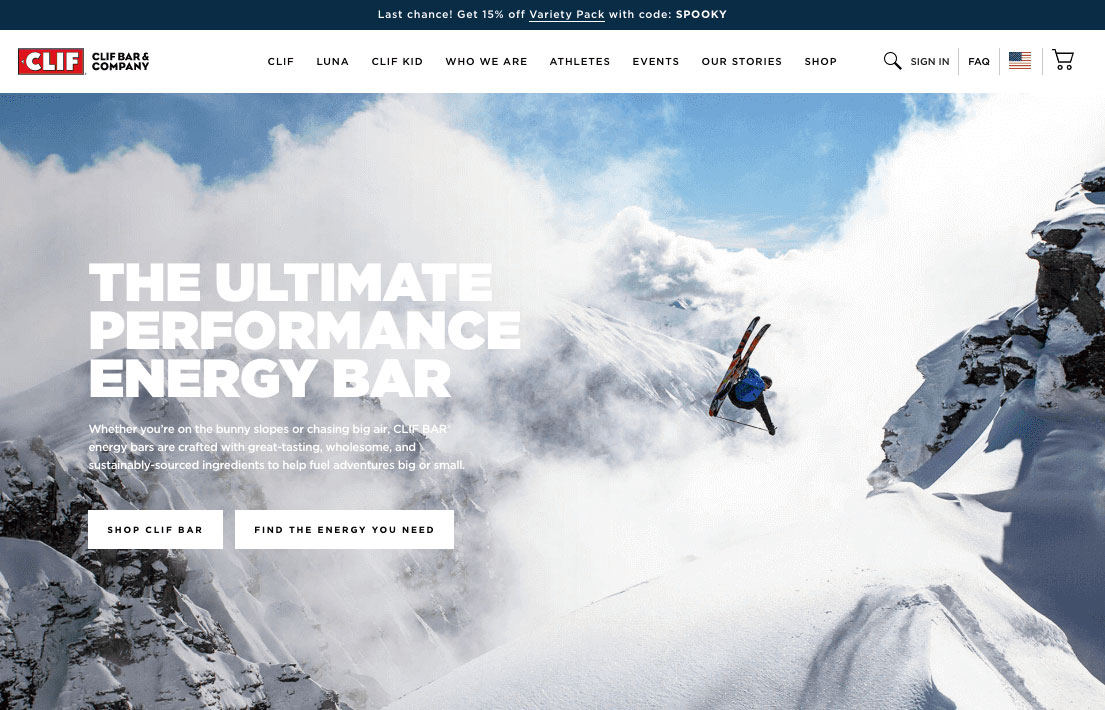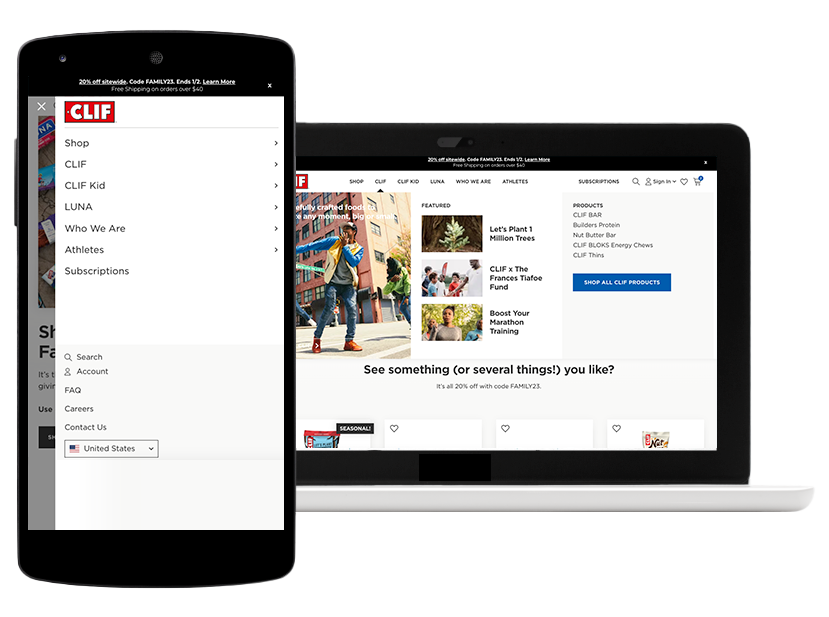About This Project
When I stepped into the realm of Clifbar, the website was a maze of missed connections—unresponsive and unwelcoming, particularly on mobile devices where the modern user lives. My mission was clear: to revitalize the brand’s digital interface, starting with the pivotal point of user interaction—the navigation. Through a major launch, I not only revamped the user navigation but also infused a strategic focus on monetization, turning potential losses into compelling opportunities for conversion. This is the chronicle of a UX odyssey, from reimagining the architecture of engagement to steering ongoing updates that keep Clif at the forefront of digital innovation. This is a short journey of crafting a navigation experience that’s not just a path, but a destination in itself.

Encountering an early version of the website presented several challenges. On desktop, the site heavily relied on multiple iframes, leading to a cluttered and disjointed user experience. More critically, the website was non-responsive, making navigation on mobile devices particularly difficult. This was evident in the user journey for viewing products, where there was no clear pathway back to other pages. Analysis of user feedback and data revealed a significant missed opportunity: the poor user experience was directly impacting product purchase conversions.

Project Overview:
Revitalized Clifbar.com’s UX, focusing on responsive, user-centric navigation for enhanced mobile engagement and e-commerce efficiency.
Challenges:
Faced with a non-responsive design, poor mobile experience, and potential sales losses, I was tasked with transforming the website’s navigation for a better user journey.
Process & Strategy:
Conducted user engagement analysis, adopted a user-centric design approach, and implemented a two-phase rollout: first enhancing usability, then optimizing for monetization.
Execution:
Developed prototypes, conducted user testing, and employed agile project management. Collaborated with cross-functional teams to ensure brand consistency and align with business goals.
Outcomes:
Achieved improved mobile responsiveness, increased user satisfaction, reduced bounce rates, higher conversion rates, and significant revenue uplift post-monetization focus.
Reflection & Learning:
Gained insights on the importance of user-centric design, agile methodology, and the strategic integration of business goals in UX. Enhanced skills in collaboration and continuous UX optimization.
Closing Thoughts
Digital Transformation:
Reflecting on the Clifbar.com navigation redesign project, it’s clear that this was more than just a technical endeavor; it was a journey of digital transformation. Through this process, I was able to witness firsthand the profound impact that thoughtful, user-centric UX design can have on a business’s digital presence and its connection with customers.
The Ripple Effect of UX Design:
This project highlighted how strategic UX design can ripple through an entire organization, influencing not just the user experience but also the broader business metrics like sales, engagement, and brand perception. By successfully intertwining user needs with business goals, the project serves as a testament to the transformative power of UX.
Professional Fulfillment:
On a personal level, this project was immensely fulfilling. It challenged me to push the boundaries of my creativity, problem solving and technical skills, while also offering a profound sense of achievement in seeing my work translate into tangible business results and enhanced user satisfaction.
Contributing to Clifbar’s Legacy:
Being a part of Clif evolving digital story has been a privilege. The opportunity to contribute to a brand that values quality, user experience, and sustainable practices aligns closely with my professional values and aspirations.
A Foundation for Future Innovation:
The completion of this project is not an end, but rather a foundation for future iteration. The insights gained, the processes established, and the successes achieved have laid the groundwork for ongoing improvement and exploration in the ever-evolving landscape of UX design.



